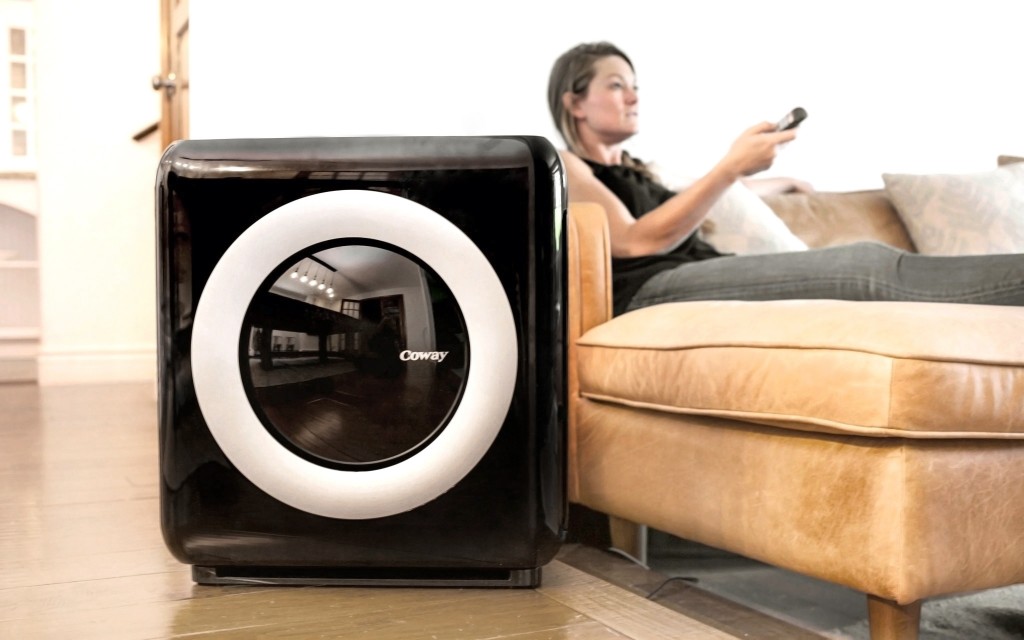How do we find the best air purifiers? First, we evaluate thousands of online user reviews to establish the most common needs and complaints of consumers. We also use this research to narrow down the field of models to the machines with the most satisfied users and the least amount of negative experiences reported. Next, we thoroughly research those models on our own, comparing notes and lumping them into categories that will address the needs of the various user groups. Finally, we buy the short-listed models and develop tests that will assess their quality and performance across every aspect of their intended use. The following is a description of our air purifier metrics, the tests that inform them, and the insights gained from the testing process and results.
Air Cleaning Performance
Air cleaning performance is the most important metric in an analysis of air purifiers. To test these machines' ability to filter airborne particulates, we used a 150-square-foot room with 8-foot ceilings and we sealed up the windows and doors to make sure no outside airflow would affect our results. We placed a Dylos air quality meter on a two-foot-high bench three feet from the center of the room. We then burned incense and paper until the particle reading was between 1300 and 1500. Once the room was prepped, we placed a purifier in the center of the room and ran it for an hour on its highest setting.
The Dylos provided a reading history so that we could track the rate at which the purifier removes particulates from the air, the results of which were recorded at 30, 45, and 60 minutes. We repeated this test for each model in our review and scored each model on how quickly and thoroughly they cleaned within the 60-minutes allowed.
Our testing focused on larger airborne particles, specifically those larger than 2.5 microns. This range covers the vast majority of allergens, including all pollen, pet dander, and most mold spores. Therefore, we found this size range to be most applicable to our audience: those seeking allergy relief. For those seeking a purifier because of more acute medical conditions that can be exacerbated by particles of smaller than 2.5 microns, we recommend consulting a healthcare professional.
Noise
We've found that noise is somewhat subjective. We always measure the noise produced by our testing products with a sound pressure level meter. However, we have found that the obtrusiveness of a noise often depends more on the pitch and timbre of a noise rather than its volume alone. Air purifiers are no exception. For our noise testing, we run all models on low, medium, and high speeds and subjectively rate how noticeable, and thus annoying, the noise they produce.
Ease of Use
In our ease of use analysis, we evaluate the user interface of the air purifiers, the time required, and the difficulty of setting them up as well as their weight and dimensions as they relate to portability. Admittedly, this is a partially subjective analysis though the results among testers have been quite consistent. In this appraisal, we adjust every setting on each model using both the onboard controls as well as the remote control if applicable. We test features such as timers and air quality sensor controlled automatic operation. We also replace the filters multiple times and move the models around the office to assess their portability. Our evaluation of these individual features is combined to produce overall ease of use scores.
Operating Cost
Our operating cost scores are based on an estimated lifetime cost figure. This figure takes three things into account: the cost of the purifier, the amount of electricity each purifier uses, and the cost of a replacement filter. In this calculation, we assumed that each purifier will last for five years (likely they will last much longer), that they would be run for 12 hours a day, that most electricity costs are around the national average ($0.13/kWh), and that filters would be replaced according to manufacturer recommendations. We used a Kill A Watt Meter to measure how much electricity each device uses in the course of two hours to determine the average energy consumption.





